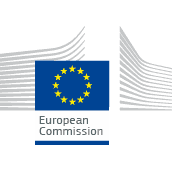
Industrial furnace design addressing energy efficiency in new and existing furnaces
Date de clôture : 21 janv. 2016
APPEL À PROJET CLÔTURÉ
APPEL À PROJET CLÔTURÉ
Entrepreneuriat et PME
Technologie bas carbone
Économie sobre en carbone
Bioénergie
Efficacité énergétique
Énergie intelligente
Environnement
IT
Conception
Horizon Europe
Recherche
Topic Description
Specific Challenge:Industrial furnaces with higher performances, optimised resource and energy efficiencies and less pollutant emissions are a major goal for combustion researchers, furnace producers and the process industries. Relatively few new furnaces are installed in Europe these days due to the capital intensive nature of the industrial furnaces, which makes this challenge more urgent to overcome.
In addition, most of the industrial furnaces in Europe are currently fed with natural gas. Another challenge in the coming years will be the use of alternative energy sources or hybrid heating systems for such applications. Novel designs based on new technical concepts, materials and different combustion routes and processes are key for new advanced furnaces and the retrofitting of existing ones.
The development of a clear understanding of the process function, the reliability of the process information and how the furnace interacts with the rest of the manufacturing process will be paramount for the new generation of technologies for new and retrofitted industrial furnaces. To develop and to scale up new systems and equipment based on new high temperature materials and advance protective coatings is a real challenge and could contribute to great savings in energy.
Scope:Proposals need to consider all aspects for the construction of new furnaces or the retrofitting of existing furnaces with more efficient and effective technologies. They need to also consider the effects on upstream and downstream processes linked to those heating systems.
The design methods and criteria need to take into account technical aspects, constraints found in legislation, compliance with codes and standards and all the related economic aspects, including how the cost of design changes can escalate.
Research activities for new industrial furnace design or the retrofitting of existing furnaces should address all of the following areas:
- Use of at least two different energy sources, e.g. electricity, gas, oil, biogas, biomass, coal. Hybrid heating systems can also be considered. Design has to take into consideration the type of feed and an optimised fuel consumption.
- Prediction tools and computer simulation development applied to the design process and performance prediction.
- Interaction of the furnace with the rest of the manufacturing process, including the effect on upstream and downstream processes. Optimisation has to be considered at system level. Heat transfer and recovery need to be also considered.
- Improved equipment efficiency by using new and improved high temperature/corrosion/wear resistance materials e.g. new steels, super alloys, high resistance composite metallic alloys, innovative refractories, high temperature insulation materials systems, hybrid metallic/ceramic solutions for high temperature applications.
- Monitoring and control systems for the SOx, NOx and CO emission of industrial furnaces
The proposals must include at least one demonstrator in an industry-relevant environment, for either new or existing furnaces.
Activities are expected to focus on Technology Readiness Levels 4 to 6. This topic addresses cross-KET activities.
This topic is particularly suitable for SMEs.
The Commission considers that proposals requesting a contribution from the EU between EUR 5 and 7 million would allow this specific challenge to be addressed appropriately. Nonetheless, this does not preclude submission and selection of proposals requesting other amounts.
Expected Impact:Compared to the current practice in the sector:
- Reduce the energy consumption by at least 15%.
- Reduce the operating costs by at least 15%.
- Reduce NOx, SOx and CO emission by at least 25%.
- Reduce Capex and Opex costs of the furnaces by at least 15%.
- Clear business cases for the deployment of the solutions in industry.
Proposals should include a business case and exploitation strategy, as outlined in the Introduction to the LEIT part of this Work Programme.
Lien officiel : Disponible pour les utilisateurs enregistrés




S'il vous plaît Se connecter pour voir cette section